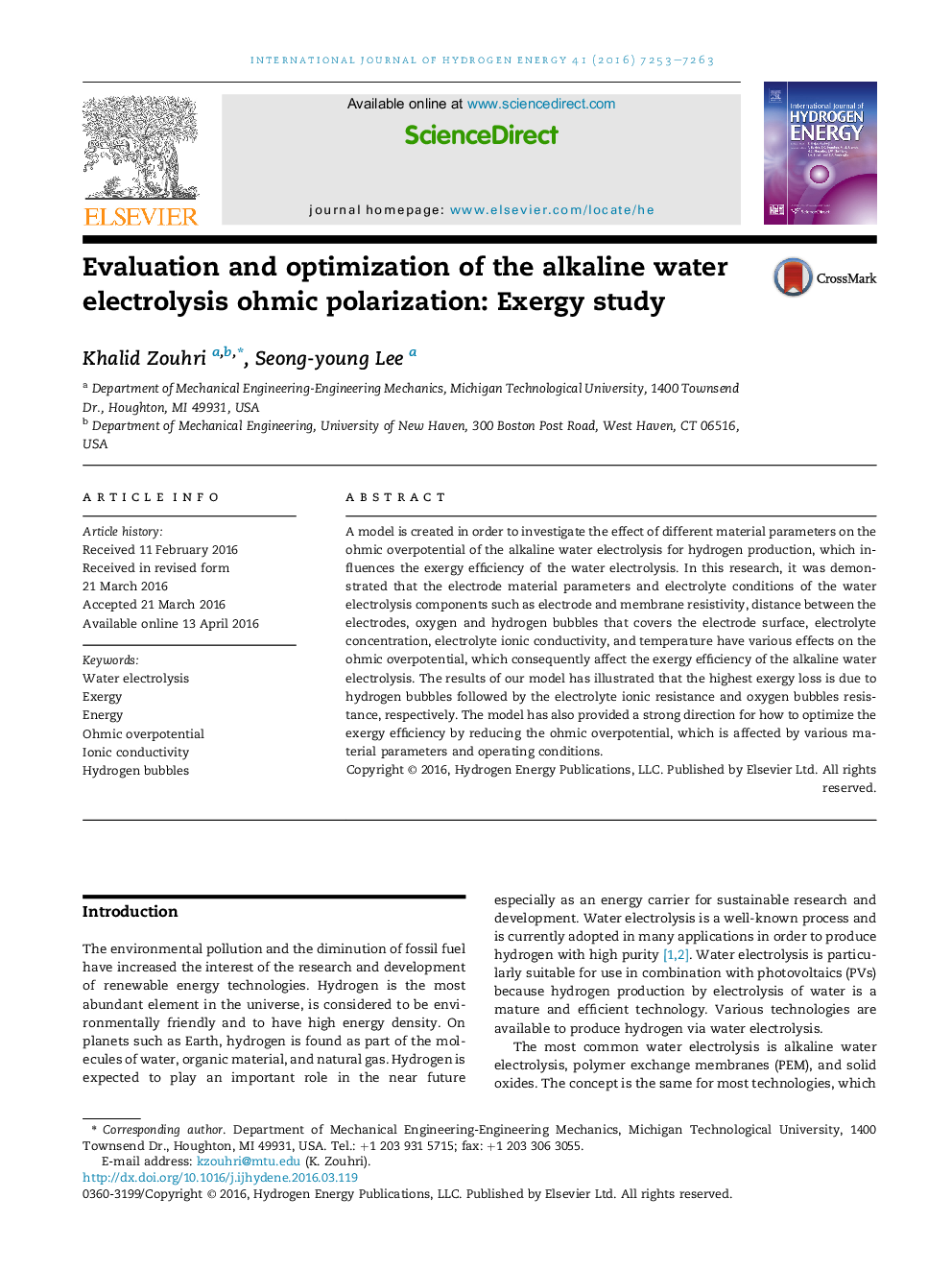| Article ID | Journal | Published Year | Pages | File Type |
|---|---|---|---|---|
| 1268678 | International Journal of Hydrogen Energy | 2016 | 11 Pages |
•Decreasing the distance between electrodes decreases the bubble and ionic resistance.•Decreasing the electrodes material resistivity increase the exergy efficiency.•Increasing molarity to the range of 8–10 mol l−1 increase the exergy efficiency.•Increasing operating temperature increase ionic conductivity and exergy efficiency.•Decreasing the bubbles in the electrolyte increases the exergy efficiency.
A model is created in order to investigate the effect of different material parameters on the ohmic overpotential of the alkaline water electrolysis for hydrogen production, which influences the exergy efficiency of the water electrolysis. In this research, it was demonstrated that the electrode material parameters and electrolyte conditions of the water electrolysis components such as electrode and membrane resistivity, distance between the electrodes, oxygen and hydrogen bubbles that covers the electrode surface, electrolyte concentration, electrolyte ionic conductivity, and temperature have various effects on the ohmic overpotential, which consequently affect the exergy efficiency of the alkaline water electrolysis. The results of our model has illustrated that the highest exergy loss is due to hydrogen bubbles followed by the electrolyte ionic resistance and oxygen bubbles resistance, respectively. The model has also provided a strong direction for how to optimize the exergy efficiency by reducing the ohmic overpotential, which is affected by various material parameters and operating conditions.
